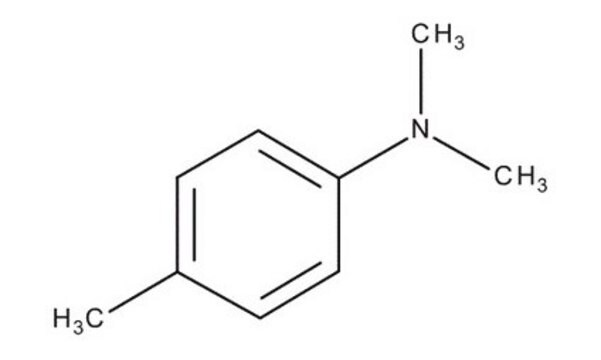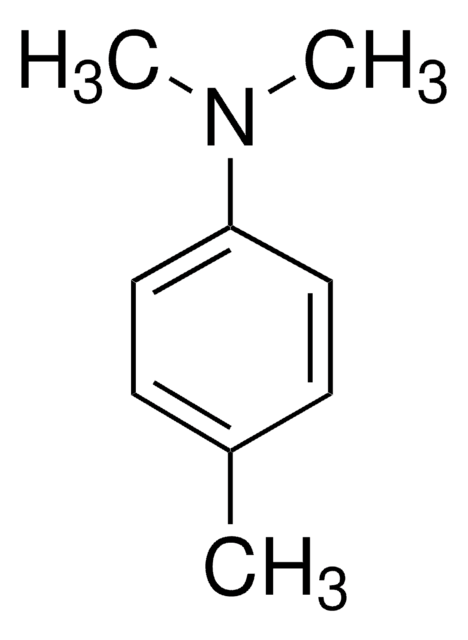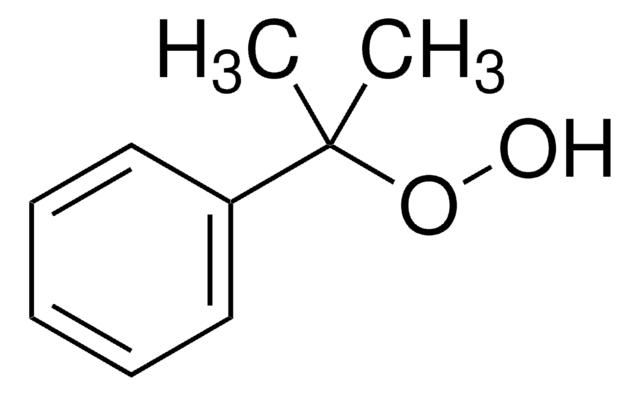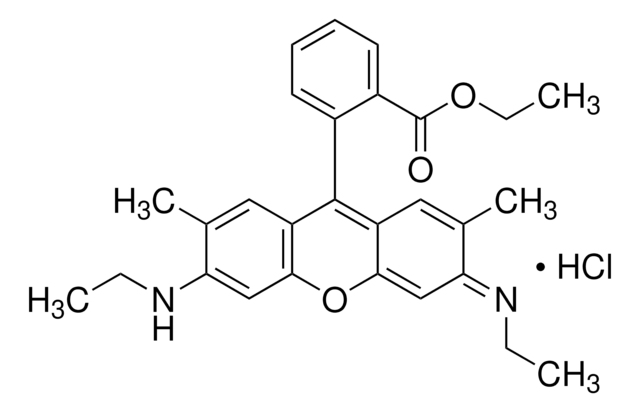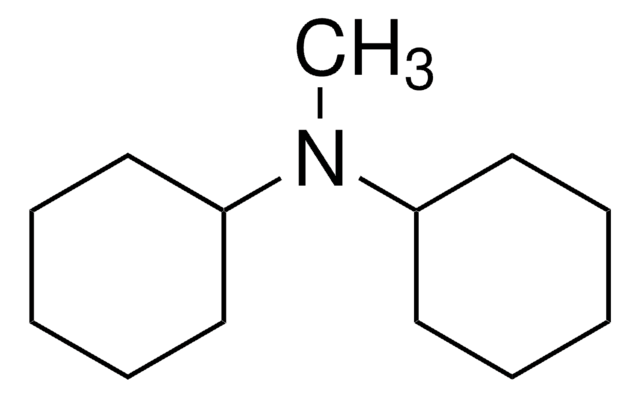推荐产品
等級
catalyst grade (for peroxide polymerization)
品質等級
蒸汽密度
>1 (vs air)
化驗
≥98.5% (GC)
形狀
liquid
expl. lim.
7 %
折射率
n20/D 1.546 (lit.)
n20/D 1.547
bp
211 °C (lit.)
90-92 °C/10 mmHg (lit.)
密度
0.936 g/mL at 20 °C
0.937 g/mL at 25 °C (lit.)
官能基
amine
SMILES 字串
CN(C)c1ccc(C)cc1
InChI
1S/C9H13N/c1-8-4-6-9(7-5-8)10(2)3/h4-7H,1-3H3
InChI 密鑰
GYVGXEWAOAAJEU-UHFFFAOYSA-N
正在寻找类似产品? 访问 产品对比指南
一般說明
4,N,N-Trimethylaniline is a N-methyl-N-alkylaniline. Its reaction with vinyl ether catalyzed by CuCl2 has been reported to afford tetrahydroquinolines. Its radical cation undergoes reaction with the anthracene radical anion and generation of electrogenerated chemiluminescence (ECL) has been observed.
應用
- Charge-transfer complexes for redox polymerization: 4,N,N-Trimethylaniline used for on-demand amine/peroxide redox polymerization. This research offers a new perspective on the use of 4,N,N-Trimethylaniline in creating controlled polymer structures, which is crucial for various industrial and pharmaceutical applications (Garra et al., 2018).
注意
储存中可能变成黄绿色
訊號詞
Danger
危險分類
Acute Tox. 2 Inhalation - Acute Tox. 3 Dermal - Acute Tox. 3 Oral - Aquatic Chronic 3 - Carc. 1B - Repr. 2 - Skin Sens. 1 - STOT RE 2 Oral
標靶器官
Reproductive organs
儲存類別代碼
6.1A - Combustible acute toxic Cat. 1 and 2 / very toxic hazardous materials
水污染物質分類(WGK)
WGK 3
閃點(°F)
168.8 °F - closed cup
閃點(°C)
76 °C - closed cup
個人防護裝備
Eyeshields, Faceshields, Gloves, type ABEK (EN14387) respirator filter
Xianghua Yang et al.
Molecules (Basel, Switzerland), 11(12), 978-987 (2007-11-17)
Tetrahydroquinoline skeletons can be formed by a CuCl2-catalyzed one-pot reaction of N-methyl-N-alkylanilines and vinyl ethers in the presence of t-butyl-hydroperoxide.
Jacob B Ketter et al.
Journal of the American Chemical Society, 126(32), 10183-10189 (2004-08-12)
Electrogenerated chemiluminescence (ECL) arising from the reaction of radical ions has previously be shown to arise from a variety of states including excited singlets, triplets, excimers, and exciplexes. In this work we describe two systems that form emissive states in
M Noda et al.
Journal of biomedical materials research. Part A, 83(1), 123-129 (2007-03-27)
Resin composites are widely used in dentistry, and are polymerized in situ using a blue-light activated, free-radical polymerization mechanism. Blue light (400-500nm) is used to activate camphoroquinone (CQ), which decomposes to form free radicals that are stabilized by dimethyl-p-toludine (DMPT).
Jennifer L Moreau et al.
Journal of biomedical materials research. Part A, 81(3), 594-602 (2006-12-21)
There is an increasing need to develop new biomaterials as tissue engineering scaffolds. Unfortunately, many of the materials that have been studied for these purposes are polyesters that hydrolytically degrade into acidic products, which may harm the surrounding tissue, and
Y Nomura et al.
Journal of materials science. Materials in medicine, 17(1), 29-32 (2006-01-04)
The polymerization initiators for resins cured using visible light usually consist of a photosensitizer, primarily camphorquinone (CQ), and a reducing agent, which is often a tertiary amine (DMPT, DMAEMA), while the initiator used for self-curing resins consists of benzoyl peroxide
我们的科学家团队拥有各种研究领域经验,包括生命科学、材料科学、化学合成、色谱、分析及许多其他领域.
联系技术服务部门